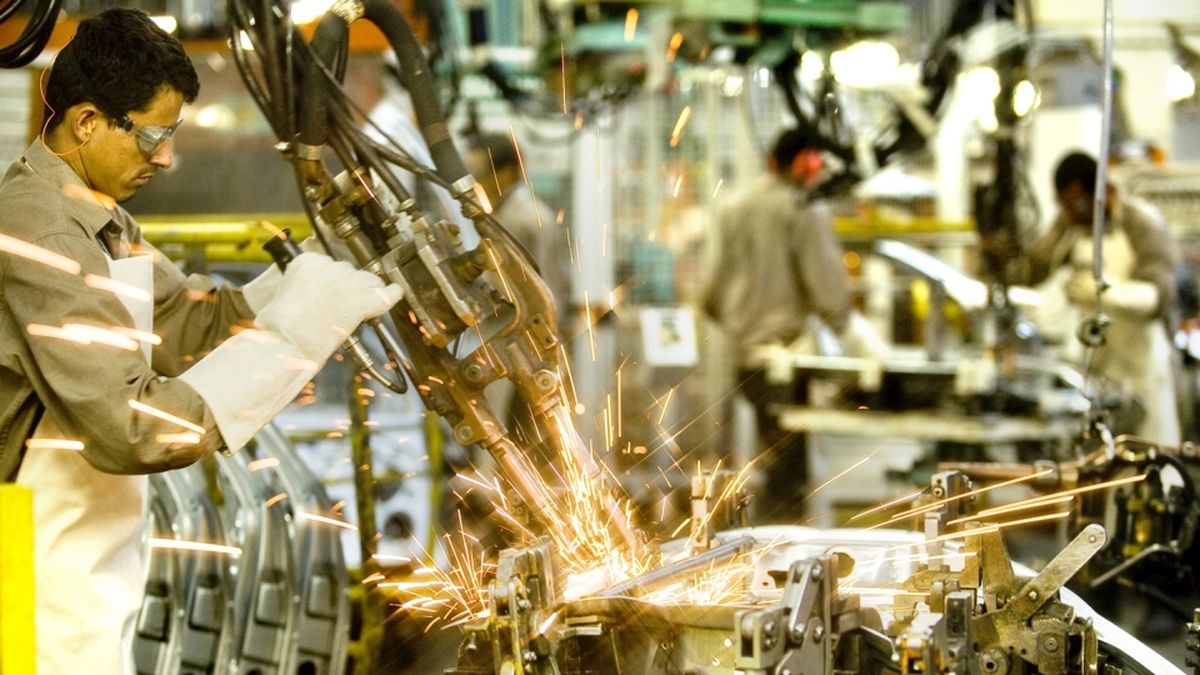
[ad_1]
In July 2021, the plant’s production was 5.6% higher than in the same month of 2019 and 3.8% compared to the same period in 2018, according to statistics from the INDEC. On the other hand, the CEP XXI – a study center that works in the orbit of the Ministry of Productive Development – specified that in Brazil manufacturing production fell by 1.5% between July 2019 and the same month of 2021, in Spain, by -5.4%; in France, -10.4%; in Italy, -4.5%; in India, -2.1%; in Mexico, -3.0%; in Germany, -9.0%; and in Japan, -6.2%.
Likewise, although Chile and the United States posted growth of 2.8% and 0.9%, respectively, both figures were lower than the Argentina mark. Among the countries analyzed by CEP XXI, only China positioned itself above the level of industrial activity over the same period, with an increase of 11.5% in July.
Disaggregating by sectors, the study center pointed out that “out of 11 branches, overall Argentina’s performance was better than the average of the countries mentioned between July 2019 and 2021”. “The difference in performance in areas such as chemicals (31.4% against 1.2% in the country average) and automotive (17.0% against 12.5%) is striking,” says the report. of CEP XXI.
The 11 sectors included in the comparison are: Food, beverages and tobacco; Textiles, clothing and leather; Wood, paper and printing; Fuels; Chemical products; pharmacists; Plastics, rubber and non-metallic minerals; Base metals and metal products; Machinery and equipment; Automotive; and Other transport equipment.
In this way, July results showed a continuation of the trend recorded in previous months, since in the cumulative of the first half of the year, the Argentine industry grew by 4.6% compared to 2019, above the countries mentioned except China.
Likewise, “in 9 of the 11 sectors, performance was better than the average for the countries cited”, indicates CEP XXI in its Panorama Productif report. By investigating the causes of these results, Schteingart notes “a very strong change in industrial policy” since “the previous government never thought of industry as a strategic sector”.
“Between 2016 and 2019, Argentina was one of the countries in the world with the largest decline in industrial product per capita, with industrial job losses in 46 of the 48 months of the previous government,” added the sociologist.
For the holder of CEP XXI, “The change in industrial policy translates into more productive credit, more development of suppliers. The other macro reason is that the sharp drop in interest rates has improved the industry’s financial position and the cost equation. These are two differentiating reasons for Argentina compared to the rest of the countries ”.
Besides, the semiconductor crisis What strikes the global auto industry has had a strong impact on countries where the sector accounts for a large part of total manufacturing output, depressing the figure for this productive sector as a whole, as in the cases of Germany and from Japan.
“The shortage of semiconductors in Argentina is less striking than in countries like Germany because cars there have on average more technological accessories than those here,” Schteingart explained.
Another reason for the comparative improvement was the effects of the blackout that occurred in June 2019 that covered almost all of Argentina on a Sunday in which Father’s Day was celebrated. , due to the fact that it generated problems for several months in some sectors industrial enterprises, which also determined a lower comparative record.
In addition, “last year the currency differential in Argentina made some durable goods very cheap at the MEP dollar exchange rate, which encouraged a strong demand for building materials and some automobiles,” he said. added the person in charge of CEP XXI.
And Schteingart concludes: “all this explains why Argentina’s industrial recovery is much faster than in the rest of the countries compared, with the exception of China”.
Industrial activity has been growing steadily since the end of 2020 and in the first eight months of this year it operated 4.8% above the same period of 2019 and 21.1% above 2020, according to CEP XXI indicator.
Source link
 Naaju Breaking News, Live Updates, Latest Headlines, Viral News, Top Stories, Trending Topics, Videos
Naaju Breaking News, Live Updates, Latest Headlines, Viral News, Top Stories, Trending Topics, Videos